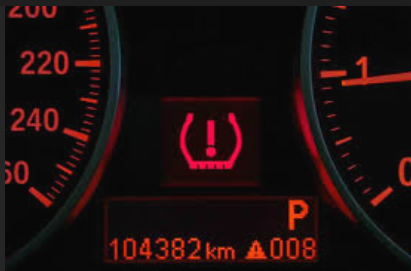Introduction
You’re driving smoothly when suddenly that little yellow horseshoe-shaped light with an exclamation mark pops up on your dashboard. Instantly, worry kicks in: “Do I have a flat? Is my car safe to drive? How do I make it go away?”
That’s your tire pressure light — and ignoring it could cost you in fuel efficiency, tire lifespan, and even road safety. But don’t panic. In this guide, you’ll learn exactly what the tire pressure light means, why it turns on, and the quick steps to fix it before it becomes a bigger problem.
Let’s break it down.
Tire Pressure Light: Everything You Need to Know
What Does the Tire Pressure Light Mean
The tire pressure light is part of your car’s TPMS (Tire Pressure Monitoring System). Its job is to alert you when your tire pressure drops below the recommended level.
- The light usually looks like a horseshoe with an exclamation mark.
- It turns on when one or more tires are underinflated by 25% or more.
Why Is the Tire Pressure Light On? (5 Common Causes)
1. Low Tire Pressure
- The most common reason.
- Caused by temperature changes, slow leaks, or normal air loss.
2. Puncture or Leak
- Nails, screws, or sharp objects can cause small leaks.
- Often, the light flashes repeatedly if the leak is severe.
3. Cold Weather
- Air contracts in lower temperatures.
- A 10°F drop can reduce tire pressure by 1 PSI.
4. Faulty TPMS Sensor
- Sometimes the sensor itself is damaged or dead.
- This usually requires professional replacement.
5. Recent Tire Change or Rotation
- If mechanics forget to reset the TPMS system, the light may stay on.

Is It Safe to Drive With the Tire Pressure Light On?
Short answer: Not really.
Driving with low tire pressure can lead to:
- Uneven tire wear (shorter lifespan)
- Poor fuel economy
- Reduced traction and handling
- Higher risk of a blowout
Think of your tires like your shoes. Would you run a marathon with a loose shoelace? Probably not. Driving with the light on is the same — risky and unsafe.
How to Fix the Tire Pressure Light
Here’s a step-by-step guide you can follow:
Step 1: Check Tire Pressure with a Gauge
- Use a reliable tire pressure gauge.
- Compare readings with the recommended PSI (found in your driver’s door sticker or manual).
Step 2: Inflate Tires
- Add air at a gas station or with a portable air compressor.
- Don’t overinflate — stick to the manufacturer’s PSI.
Step 3: Inspect for Damage
- Look for nails, cuts, or visible leaks.
- If unsure, apply soapy water to the tire surface — bubbles indicate leaks.
Step 4: Reset the Tire Pressure Light
- Some cars reset automatically after driving a few miles.
- Others require manual resetting (often a TPMS button under the steering wheel or in the settings menu).
Step 5: Visit a Professional if Needed
- If the light stays on despite proper inflation, it could be a faulty sensor or a hidden leak.
How to Reset Tire Pressure Light (By Car Type)
While exact methods vary, here are common reset tricks:
- Push Button Method: Look for a TPMS button (often near the steering wheel). Hold until the light blinks.
- Drive Method: Inflate tires properly, then drive at 50 mph for 10 minutes.
- Settings Menu: Some cars (especially newer ones) let you reset via the infotainment system.
Preventing the Tire Pressure Light From Coming On
- Check tire pressure monthly (don’t wait for the light).
- Adjust PSI seasonally — cold weather lowers pressure.
- Rotate tires regularly to prevent uneven wear.
- Invest in quality tires with strong sidewalls.
Remember: The tire pressure light is a warning, not a suggestion. Treat it like an early alarm to avoid bigger issues.
Frequently Asked Questions (FAQ)
Q1: Can I just ignore the tire pressure light if my tires look fine?
No. Tires can lose air without visibly deflating. Always check with a gauge.
Q2: Will the light turn off on its own?
Yes, once the tires are properly inflated and the system resets. If not, you may need to reset manually.
Q3: Does the tire pressure light mean I have a flat tire?
Not always. It may just mean the pressure is low, especially in cold weather.
Conclusion
When your tire pressure light comes on, it’s your car’s way of saying: “Pay attention now, or pay more later.”
By understanding the causes, checking your PSI regularly, and resetting the system properly, you’ll avoid premature tire wear, wasted fuel, and safety risks.

